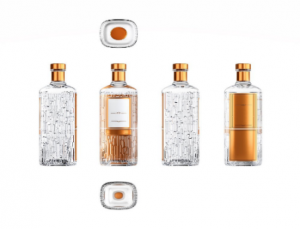The law presented by art. 4 of EU Regulation 2017/1001 provides many types of trademarks, among which the shape (or three-dimensional) trademark.
It is commonly recognized, and even the Court of the European Union confirms it, that the assessment of the distinctive capacity of a shape trademark can be more difficult, given that such trademarks are not necessarily perceived by the public of reference in the same way as a denominative or a figurative trademark (07/10/2004, C-136/02 P, Torches, EU:C:2004:592).
Through the Common Practice 9 (also known as CP9), the European Union Intellectual Property Network (EUIPN), the EUIPO and several trademark Offices in the European Union agreed upon a common practice in relation to the distinctive character of the three-dimensional trademark which recognized the influence of particular elements and factors on the effective distinctiveness of the sign in its whole, when the shape is not distinctive in itself.
With reference to the above-mentioned case, on 3rd June 2022 the EUIPO Fifth Board of Appeal granted registration to a trademark of the company Absolut Company Aktiebolag. The distinctive character of a three-dimensional trademark of the vodka bottle represented below has been ascertained through the decision pursuant to art. 4 of the EU Regulation n. 1001/2017.
 The EUIPO examiner had initially established the lack of distinctive character, observing that it was a simple three-dimensional reproduction of a bottle, and also very similar to those available on the specific market of vodka. As a consequence, during the first exam such shape was not considered capable of drawing the attention of the average consumer and of reminding of the origin of the marketed product.
The EUIPO examiner had initially established the lack of distinctive character, observing that it was a simple three-dimensional reproduction of a bottle, and also very similar to those available on the specific market of vodka. As a consequence, during the first exam such shape was not considered capable of drawing the attention of the average consumer and of reminding of the origin of the marketed product.
The applicant Absolut Company Aktiebolag subsequently appealed against such decision supporting the existence of a sufficient level of distinctiveness to the registration of the shape trademark. According to the applicant, the combination of the different elements is such as to strongly distinguish the bottle in exam from the other vodka bottles on the market, which on the contrary appear to be characterized by a repetition of the elements and the colors used.
Even though the Board of Appeal recognized the presence of some elements able to confuse the bottle in exam with other vodka bottles on the market was, in light of a global evaluation, it established the presence of a strong distinctiveness of the trademark on the basis of the stylistic element, represented by the shades from copper to gold which cover most of the bottle, like: closure, neck, back of the bottle and frame of the frontal label.
Therefore, the Board undermined the initial decision of the examiner and confirmed the distinctive character of the trademark in exam, by accepting the relative application for registration.
In this occasion, the EUIPO recalled that a trademark acquires distinctive character if it differs significantly from the standard or from the custom of the interested sector and it is therefore able to draw the attention of the consumer, who perceives the particular combination of the elements like an indication of origin, and not as a simple decoration.
Elena Bandinelli
